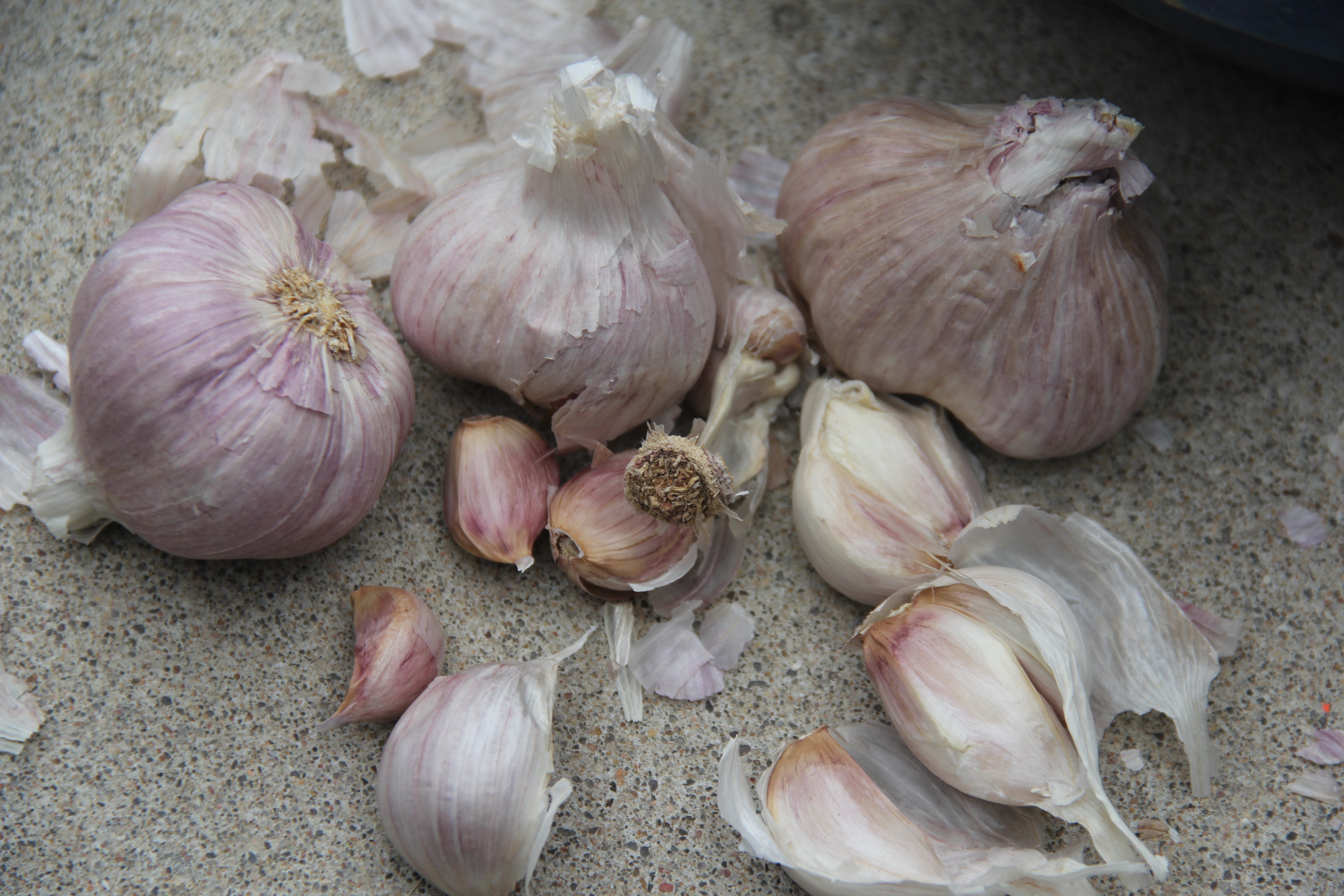Fall is an ideal time to plant garlic. Just about any sunny spot of well-drained soil will work. Crumble up the dirt, add some compost, and you are ready to plant.
There are many varieties of garlic that you can find locally at garden centers or seed stores, or you can order online. Although not recommended by the experts, I have planted garlic that I bought at the food market and had fairly good luck with it. The growing guides for our area suggest that you try to find “hardneck” varieties rather than the “softneck” ones sold at the grocery store. But if you can’t get any of the former, plant what you can find.
One pound of garlic will plant a 30-foot row. I don’t have that much room in my garden so I plant in a little square, usually in a raised bed.
Separate the garlic into cloves before planting. Do not remove the skins and plant within a couple of days so they don’t dry out. Plant the cloves with the blunt side down and the tip pointing up, two inches deep and about six inches apart.
If you are planting in rows, allow at least 12 inches between them. Water after planting and as needed when dry. Mulching is a good idea when planting. In the spring, after danger of frost has passed, remove the mulch to allow the soil to warm up. Keep the weeds pulled and the grass out of your garlic garden. If you managed to find hardneck varieties of garlic, you will be blessed with garlic scapes in the spring and early summer. A scape is the flower stalk of the plant and needs to be cut off so that the energy of the plant will be concentrated on the bulb. Scapes can be used in cooking to provide a mild garlic flavor. Use them like you would green onions.
Your garlic will probably be ready in July. When the outer three or four leaves of the plants yellow and die, quit watering. When about five leaves have died, dig up the plants and let them dry in the shade for a day. Then, brush off the dirt and tie the plants in bunches (or braid them together) and hang them, bulb down, in a shady, ventilated site to dry for two to three weeks. When dry, clip the roots and stems and store in mesh or paper bags in a cool dry place or in the vegetable drawer of the refrigerator.
Mom’s Garlic Salad
Here’s a simple old-fashioned recipe for garlic salad, which despite its name is really more of a dip or spread.
3 cloves garlic (or more if you like)
1 carrot
½ head cabbage
½ head iceberg lettuce
1 teaspoon salt
½ teaspoon pepper
½ cup mayonnaise
Finely chop garlic, carrot, cabbage and lettuce. Add salt, pepper and mayo, mix well and serve with crackers or toast points.
Roasted Garlic
Roasting garlic mellows the flavor. The soft cloves are easily spread on toast points.
To roast garlic, slice about 1/8 inch off the tops of the cloves of a head of garlic (opposite the root end). Leaving the skins on and the head intact, drizzle the garlic with extra virgin olive oil, then sprinkle with kosher salt and freshly cracked black pepper and wrap in aluminum foil. Bake in 400-degree oven about 45 minutes or until cloves are easily pierced with a knife. Cloves will slip out of their skin.
Ailoi
Add minced garlic and lemon juice to mayonnaise to make a quick version of the class Italian sauce, which is typically served on sandwiches, grilled meats and vegetables.









